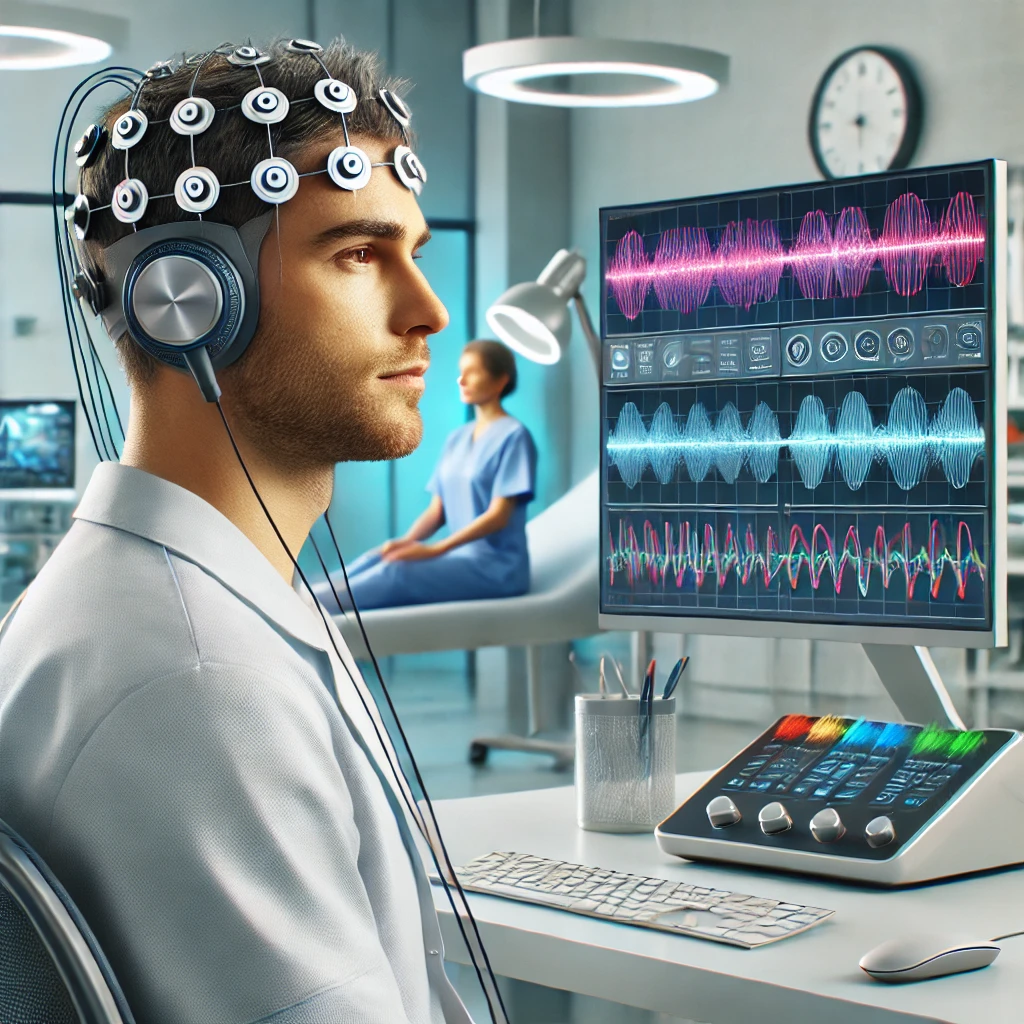Neurofeedback is a technology used to treat attention deficit disorder and insomnia that analyzes and manipulates a patient’s brainwaves in real time to improve symptoms. Brainwaves are collected through electrodes, converted to digital form and displayed on a screen, and patients are trained to regulate their own brainwaves. Through repeated training, specific brainwave patterns can be strengthened to reduce symptoms.
Attention deficit disorder and insomnia are serious mental illnesses in the modern world. People with these disorders have brain waves that are different from those of normal people, and it is believed that controlling their brain waves can help treat them. This technique is called neurofeedback. Let’s take a look at the process of diagnosing and treating diseases with neurofeedback.

First, electrodes are placed on the patient’s scalp to collect brain waves, a type of bioelectric signal, for diagnosis. Since brain waves are very weak, the signal must be amplified by applying a strong voltage to the input brain waves through an amplification circuit. However, the brainwaves are also subject to changes during small movements such as blinking, so a filter circuit is used to filter out the main brainwaves and find the dominant frequency band. Finally, the analog brain waves must be converted to digital waves using an A/D converter so that they can be easily viewed on a computer screen.
This process can be used to diagnose diseases such as attention deficit disorder, where the delta and theta waves are much stronger than in normal people, or depression, where the right brain oscillates faster than the left.
Brain waves are an important indicator of our physical and mental state, and must be regulated to maintain normal activities and states. Neurofeedback, in particular, has been recognized as a highly effective way to control and regulate these brain waves. In the modern world, attention deficit disorder and insomnia are common problems, and they are becoming more frequent due to stress and excessive information exposure. Therefore, there is an ongoing interest and research in brainwave modulation techniques.
So, how do we treat these patients? The principle is simple. For example, for patients with attention deficit disorder, it’s hard for them to know when they’re focused, so by showing them their brain waves in real time on a screen, they can practice getting into that state of focus, which is to say, by having them think about different things and noticing when the beta waves associated with focus come on, and then giving them feedback to help them stay in that state. It’s like the conditioned reflex that Dr. Pavlov discovered: if you tell a patient that a certain brain wave is produced, they’ll try to stay in that state. The brain then develops a circuit to generate the brainwave, and with continued training, the circuit is strengthened and the specific brainwave increases.
In fact, in 1971, Dr. Luba successfully treated attention deficit disorder with neurofeedback using beta waves, and in 1995, Dr. Rosenfeld successfully treated depression with neurofeedback training that balanced the speed of brain waves in the left and right hemispheres. The benefits of neurofeedback don’t stop there. Recent studies have shown its usefulness for autism, anxiety disorders, and even chronic pain management. Neurofeedback is also increasingly being used to improve the performance of athletes and artists. This is done in an effort to manipulate brainwaves to stay in the best mental state and maximize concentration.
Currently, neurofeedback is being used to treat a variety of conditions, including autism and insomnia. The advances in this technology are giving many people new hope and are moving us closer to maximizing the brain’s potential. With continued research and clinical applications, neurofeedback is expected to become more widely used and help solve a variety of mental and physical problems.
